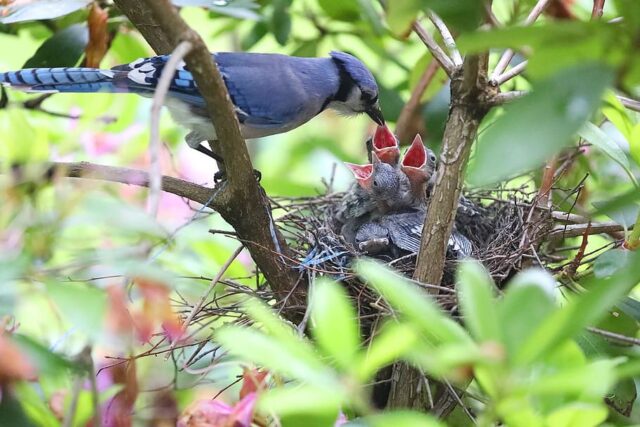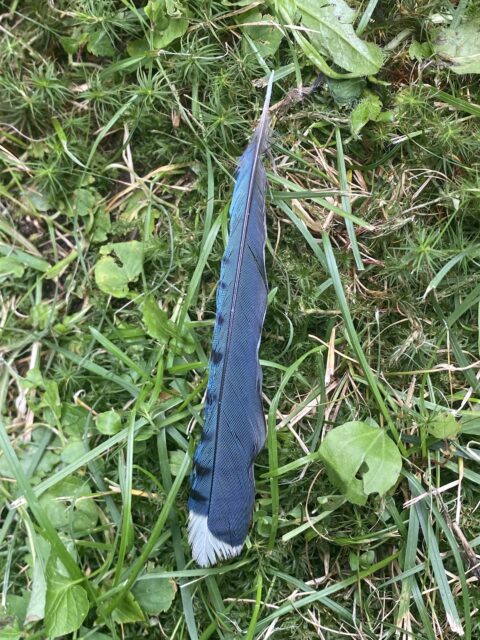Rebecca Durnick, SCA Interpretive Ranger
One of the most common backyard-bird species is the Blue Jay. These bright and flashy birds are commonly seen throughout the central and eastern United States, and some southern regions of Canada. With their loud and alarming calls, they make their presence known to any human and wildlife around them. Blue Jays are seen at all of New Hampshire’s State Parks, and up at Umbagog Lake State Park, there is a particular flock that calls this place home.
Migration
If you have ever been to Umbagog Lake State Park, you may know it’s noisiest and nosiest visitors. The lake is home to 8 Blue Jays that are a part of a residential flock (July 2023). During the winter some of the flock may migrate towards the coast. Blue Jays sometimes migrate in larger flocks, but it isn’t uncommon for the same Blue Jays to stay year-round especially as adults. It is more common to see juveniles migrate. When it warms up the Blue Jays that have left may return or leave for a new home.
Calls
The Blue Jays are up with the morning sun making a ton of unique calls just like other corvids (crows, jays and magpies). They often make a “jay! jay!” call, but can do a variety of calls. They can even do a Red-Shouldered Hawk imitation to trick other animals in thinking a hawk is in the area. This is all done to ward off other birds in their territory.

Territory and Nests
Blue Jays are known for being very territorial. Blue Jays will often drive off intruders in order to defend their nest and resources. They will put up the feathers on top of their head or the crest to appear more intimidating. Around their own nests Blue Jays will be much more subtile and quiet. This makes it more challenging for a predator like a crow, eagle, or hawk to find the nest. Blue Jays will also lower their crest on the top of their heads when around their family and nest. The nesting pair of Blue Jays are extremely devoted to their nestling. Blue Jays nest in the notches of trees or in branches. This makes the nest easier to defend and is more protected from the elements.

So, are Blue Jays bullies? It really depends on your point of view. To another bird species the Blue Jay is your competition that may bully you out of your next meal. To a nestling your family group is your most loyal defender. Every human has their own perception too. Personally, I think they’re the helicopter parents of the bird world.
Next time you are in the Great North Woods, or any New Hampshire State Park, keep a look out for these beautiful birds. There are even opportunities to find traces of them like this feather found by a young visitor at Umbagog Lake State Park. Just remember to leave it behind for the next visitor to enjoy.
References
All about birds, Cornell Lab of Ornithology. (2023). Blue Jay Overview. https://www.allaboutbirds.org/guide/Blue_Jay/overview#
Audubon. (2023, June 29). Blue Jay. https://www.audubon.org/field-guide/bird/blue-jay
National Geographic. (n.d.). Blue Jay. Animals. https://www.nationalgeographic.com/animals/birds/facts/blue-jay?loggedin=true&rnd=1689797551736

